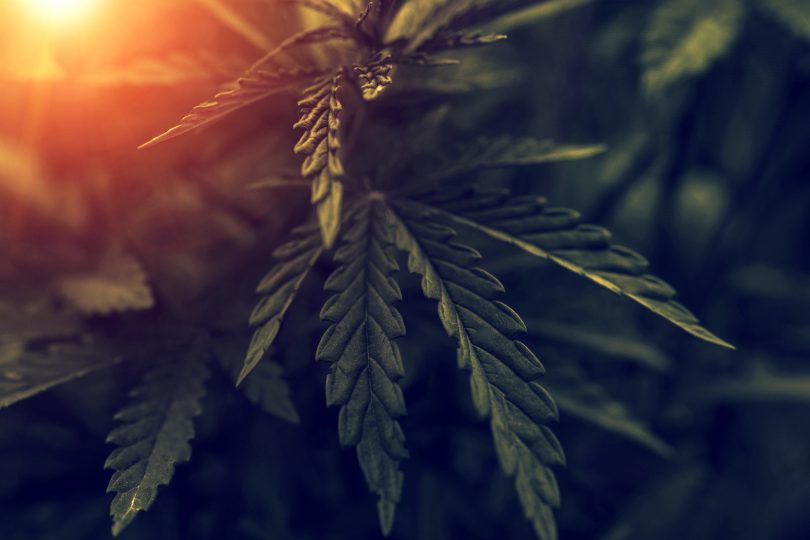As the demand for cannabis research reaches heights unheard of, it’s becoming more apparent than ever that this is a much more complex plant than we ever could have imagined.
Modern cannabis research dates back to the early 1960s, when Israeli Professor Raphael Mechoulam isolated the very first phytocannabinoid, THC. It was during that time that CBD was first fully elucidated as well, although it was actually discovered 20 years prior. Since then, nearly 150 phytocannabinoids have been discovered, although the list of compounds to be isolated and studied remains short.
What we have also discovered over the years, is that different versions of the same cannabinoid can exist. For example, THCA vs THC. The only difference between those two cannabinoids is that THCA still has its carboxyl acid group, meaning it’s only present in raw plant material that hasn’t been exposed to high temperatures yet. Once a cannabis bud is smoked or vaporized, the THCA loses that carboxyl acid and becomes THC. The same connection exists between CBDA and CBD.
Now, thanks to an analytical technique known as mass spectrometry, the identification of new cannabinoids is becoming increasingly easier. A group of Italian researchers who are very familiar with this process have recently released a study profiling two new cannabinoids that have yet to be discussed: THCP and CBDP. But what exactly are these new compounds on the block, and what does it mean for patients, consumers, and industry stake-holders?
Click here or use the form below to subscribe to the Medical Cannabis Weekly Newsletter
What is THCP?
Let’s start with the very basics, THCP stands for Tetrahydrocannabiphorol and, as expected, it has a similar molecular structure to THC. There is one critical different though, it has an elongated alkyl side chain with seven carbon links, compared to only 5 links in regular THC’s side chain.
Check out the image below. The zigzag line extending out from the cell structure is the side chain. Each point on that line, including the very last point at the end of the line is a link. As you can see, both THCP and CBDP have 7 links in their chains whereas THC and CBD have only 5 links on their side chains.
Now you may be wondering why this is so significant. Well, these are the first cannabinoids with side chains longer than five links, and the length of the side chain has been shown to have a vital part in the way THC interacts with the body’s CB1 receptors. Basically, the elongated side chain makes the binding affinity between cannabinoid and receptor much stronger.
Researchers checked THCP’s binding affinity against both the CB1 and CB2 receptors and found an impact on both. When it came to the CB1 receptor, THCP was 33 times more active than regular THC. With the CB2 receptor, THCP was roughly 5-10 times more active.
Study Shows That THC Benefits Are Greater Than CBD’s
For more information on the endocannabinoid system, click here. You can also learn a bit about anandamide here.
What is CBDP?
Just like THCP, CBDP (cannabidiphorol) also has a longer side chain than its counterpart. However, since CBD has a poor binding affinity with CB receptors, researchers are unsure if this revelation means anything at all. Because of this, studies on the medical potential of CBDP are not currently a top priority.
It is possible though that this longer side chain could improve the way the cannabinoid binds with these receptors, but that remains to be known. There’s also the question of the entourage effect. Since it’s well known that a little bit of THC can ramp up the effects of CBD. Can THCP have the same impact? It’s possible, as the researchers point out, science can be full of surprises.
What are the medical implications of these new cannabinoids?
As discussed above, it’s unknown whether CBDP has any additional therapeutic value at all. THCP on the other hand, is slated to be the next big thing in medical cannabis research. When it comes to THC, a minimum of 3 links are required to bind the cannabinoid to a receptor. Scientist have noted that binding affinity peaks at eight links and then starts to decrease, and THCP is closer to this binding peak than any other cannabinoid that’s been discovered so far.
This means that any medicinal effects that users experience from THC, such as relief from pain and nausea, neuroprotective benefits, and more, can be greatly increased by the addition of the THCP cannabinoid. It’s essentially a booster for THC, making its effects on the body that much more potent.
What’s also interesting about THCP is that we’re still not sure if THCP is psychoactive at all. Logically, one would assume that since it’s “stronger” than THC, it would have stronger psychotropic effects as well, but that’s not necessarily the case. Even a slight change in molecular structure could create great changes in the way we feel the effects of this cannabinoid
Can I find THCP anywhere?
At the moment, you’d be hard pressed to find any THCP products or strains in your local dispensaries or even online shops. If this compound proves to be as important is researchers are currently estimating, additional studies, processing, and cannabinoid-specific cultivation techniques will be required to make THCP in a substance that can actually be purchased and consumed.
Aside from the obvious extractions that can create THCP oil, capsules and more, this really emphasized the need to cultivate breeds of cannabis and hemp that are not THC or CBD dominant. We are already learning more about stains that contain higher levels of CBG, THCV, and CBDV, so flowers with additional compounds will become increasingly popular as well.
According to the study, the researchers will continue testing the THCP cannabinoid, maybe even CBDP, to see how it functions within the human body and what, if any, conditions can be treated with it.
For more articles like this one, subscribe to the Medical Cannabis Weekly Newsletter.
https://cannadelics.com/2019/01/07/smoking-cbd-hemp-flowers/